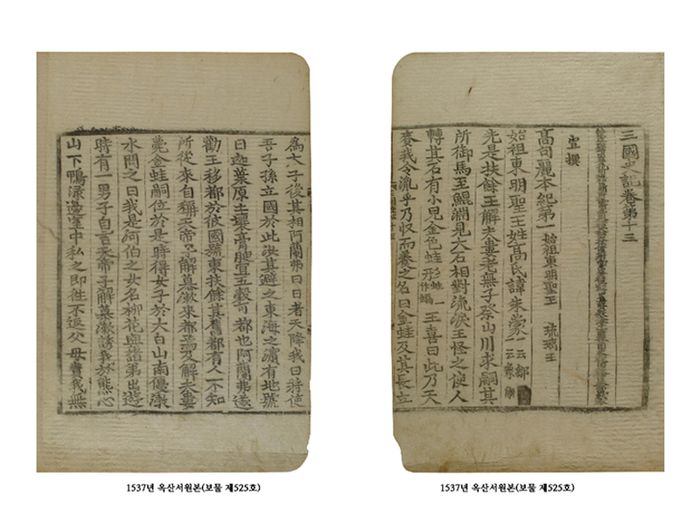"(Translation) 東明聖王"의 두 판 사이의 차이
(→Student Translation : (EWA)) |
(→Translation) |
||
| 31번째 줄: | 31번째 줄: | ||
| − | ==='''Student Translation : (EWA) === | + | ==='''Student Translation : (EWA)''' === |
---- | ---- | ||
2018년 7월 20일 (금) 00:50 기준 최신판
| Primary Source | ||
|---|---|---|
 |
Title | |
| English | ||
| Chinese | ||
| Korean(RR) | ||
| Text Details | ||
| Genre | ||
| Type | ||
| Author(s) | ||
| Year | ||
| Source | ||
| Key Concepts | ||
| Translation Info | ||
| Translator(s) | Participants of 2018 Summer Hanmun Workshop (Intermediate Training Group) | |
| Editor(s) | ||
| Year | 2018 | |
Original Script
Translation
Student Translation : (EWA)
Tongmyong, the Sagacious King
The founding king, Tongmyong Songwang, came from the Gao family, his given name was Zhu Meng [also written as Zou Mou or Zhong Jie]. First, there was the king of Buyo, called Heburu who was old and childless. He performed ritual sacrifice for mountains and rivers asking for an heir. The horse the king was riding on reached Kun Yon. There, facing them, a big rock was seen which was shedding tears. The king found it strange and sent some people to turn the rock. There was a little child there, of golden colour and shaped like a frog [a frog sometimes made to be a snail]. The king said with joy: this must be a royal descendant bestowed upon me by Heaven! The king took the child and raised him under the name of Golden Frog. When he grew up, he became an heir to the throne.
- Discussion Questions:
I understand that this is just one of the three or four possible interpretations of this text. I have picked the one that I find most convincing to me.